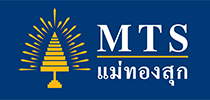Analysis: Investment strategy based on reducing risk faces its own challenge
A fund trading strategy that tracks hundreds of billions of dollars in assets and often gets blamed for exacerbating market selloffs is facing a challenge from the policy response to the pandemic. But fund managers said they are adapting, and new money is flowing in.
Most closely associated with investment funds such as Bridgewater Associates and AQR, the strategy, called risk parity, typically spreads risk over stocks, bonds and other financial assets, as against traditional 60-40 stock and bond portfolios where equities carry more risk. It uses leverage to magnify returns from lower-risk assets such as bonds.
But the U.S. Federal Reserve’s policy of keeping interest rates near zero in response to the coronavirus crisis has raised questions about the strategy. Bond prices, which move inversely to yields, have little room to rise and volatility has been generally low, which dulls Treasury bonds’ appeal, analysts and investors say.
Managers of risk parity assets said they are adjusting to the new reality, that the industry can thrive in a low-yield environment and investors can still benefit from the diversification it brings.
Reference: Reuters




